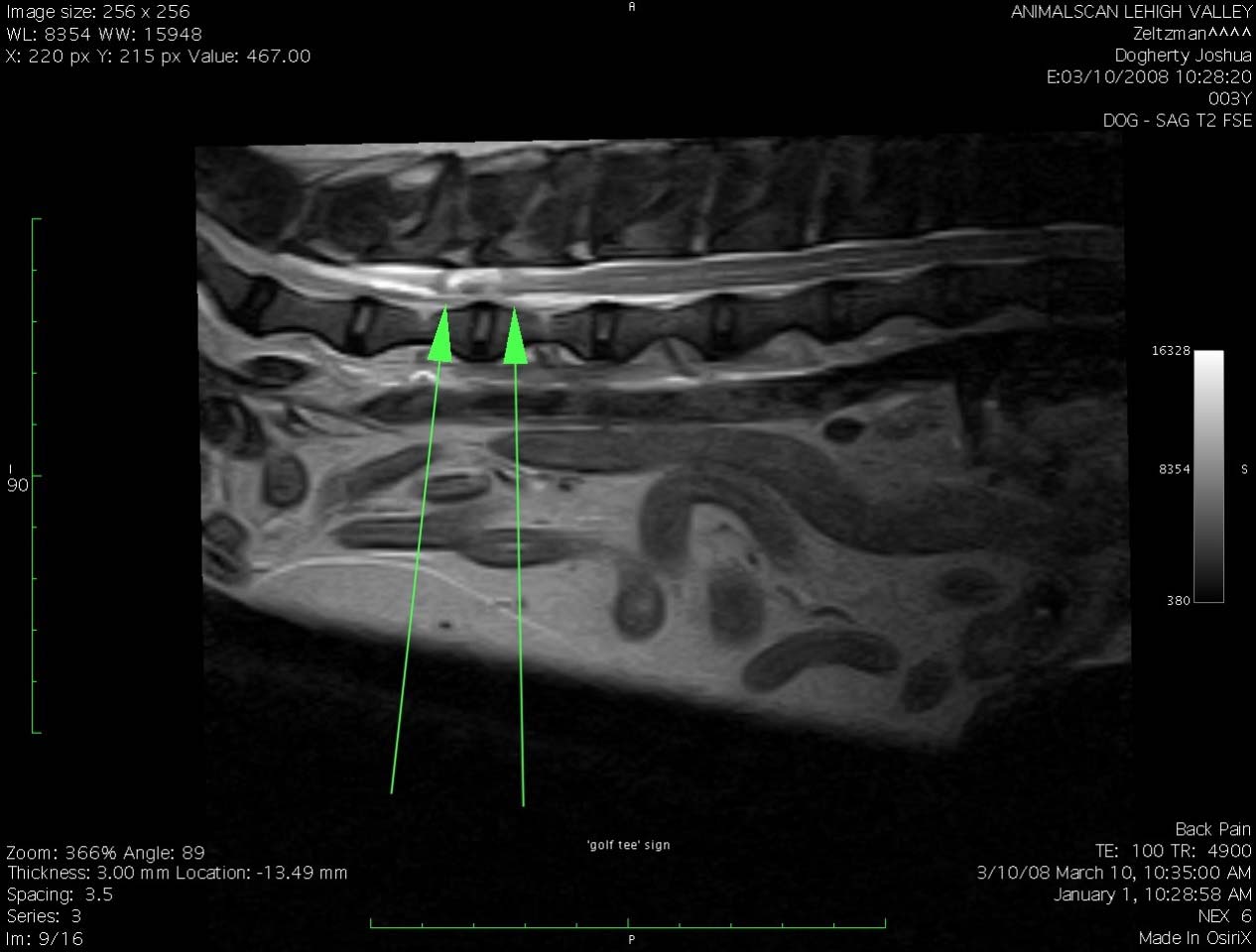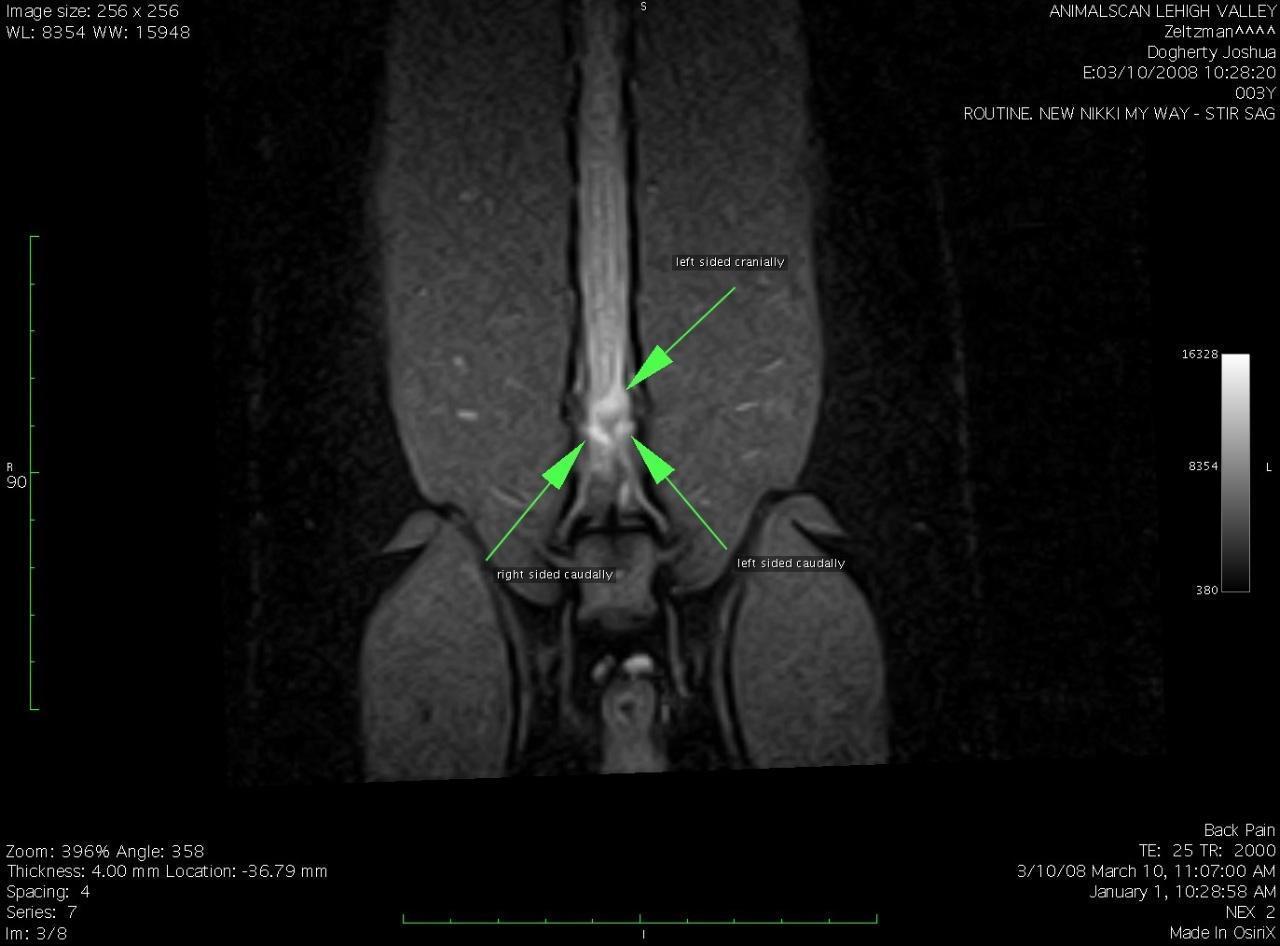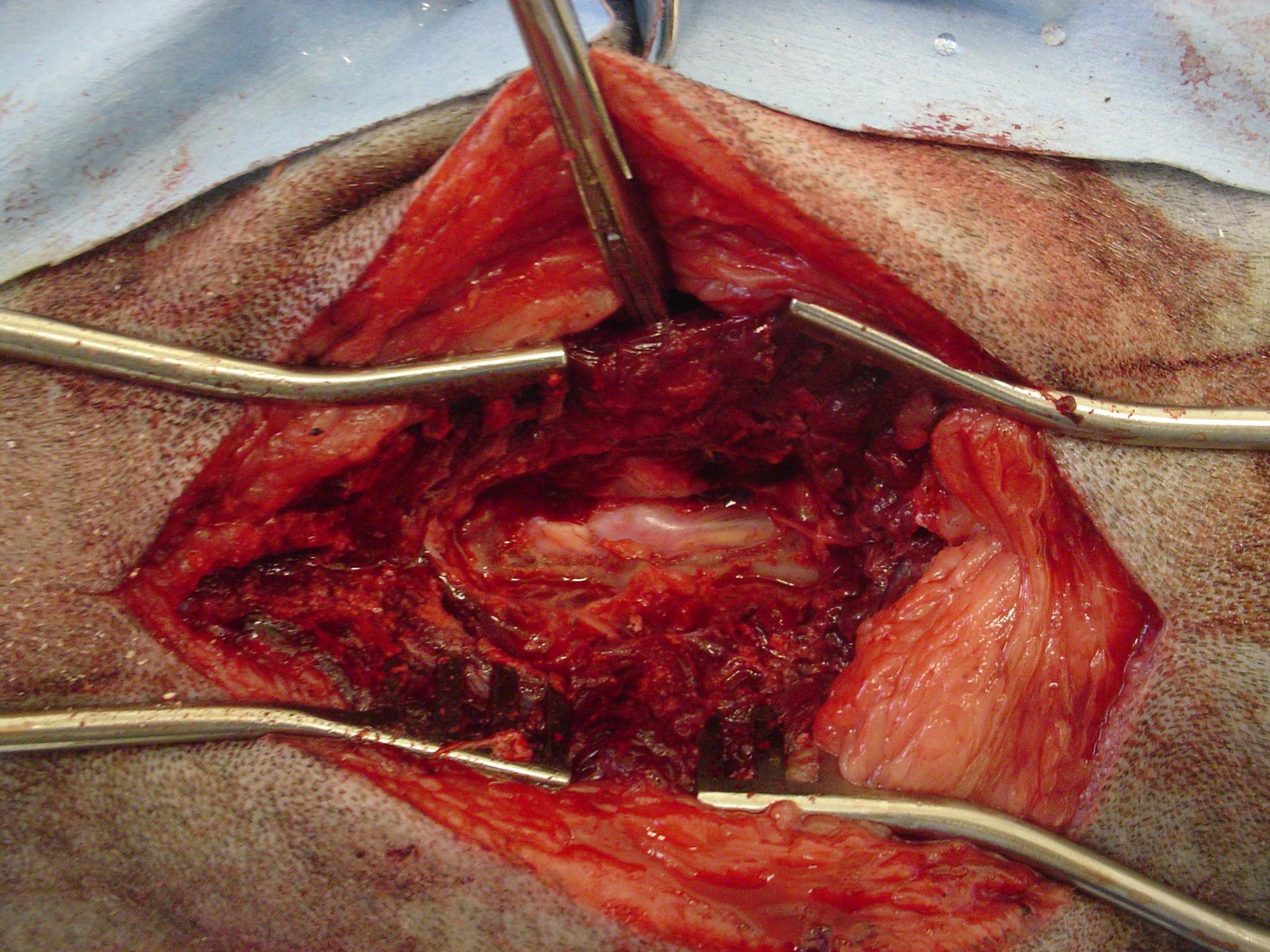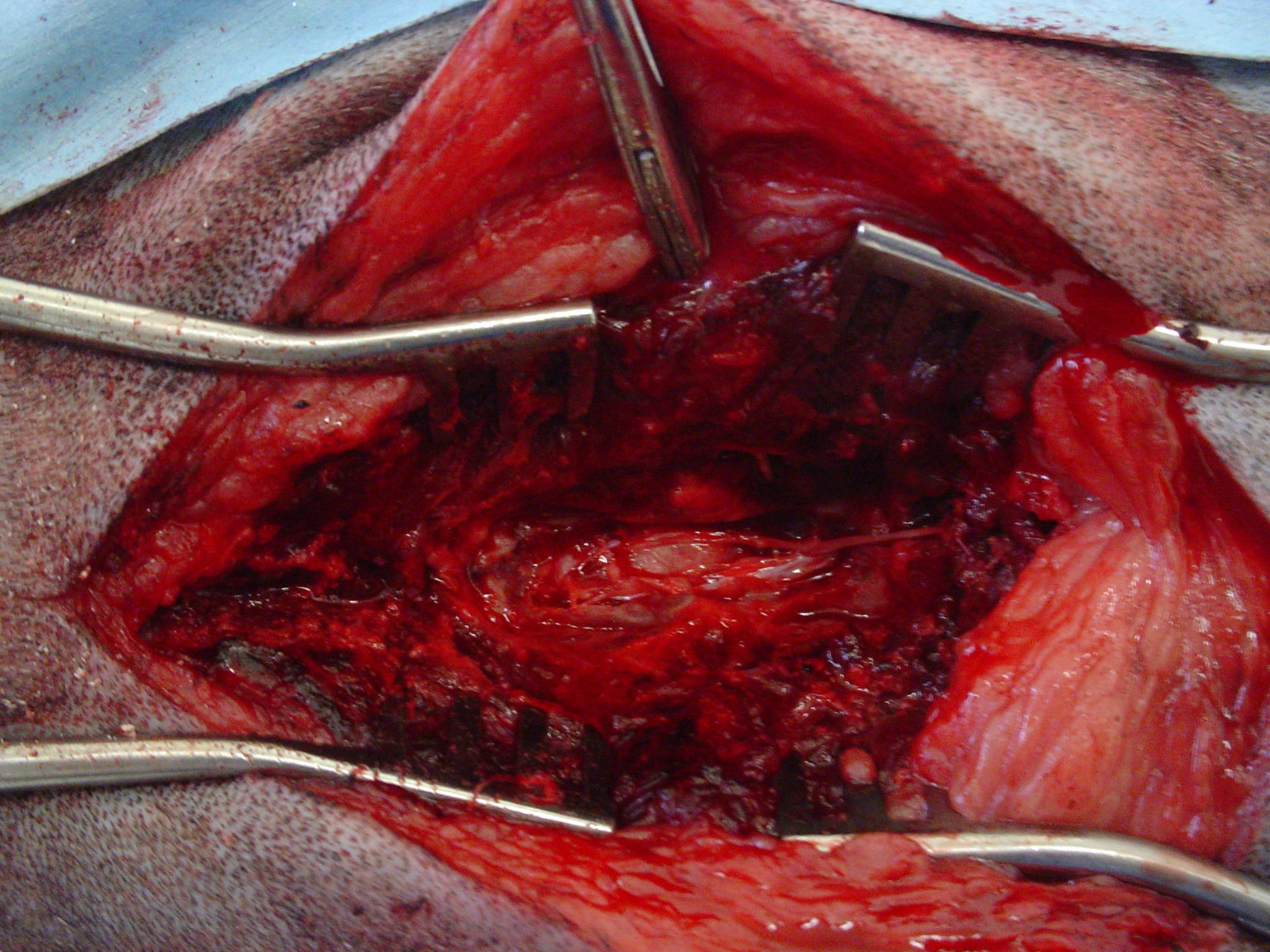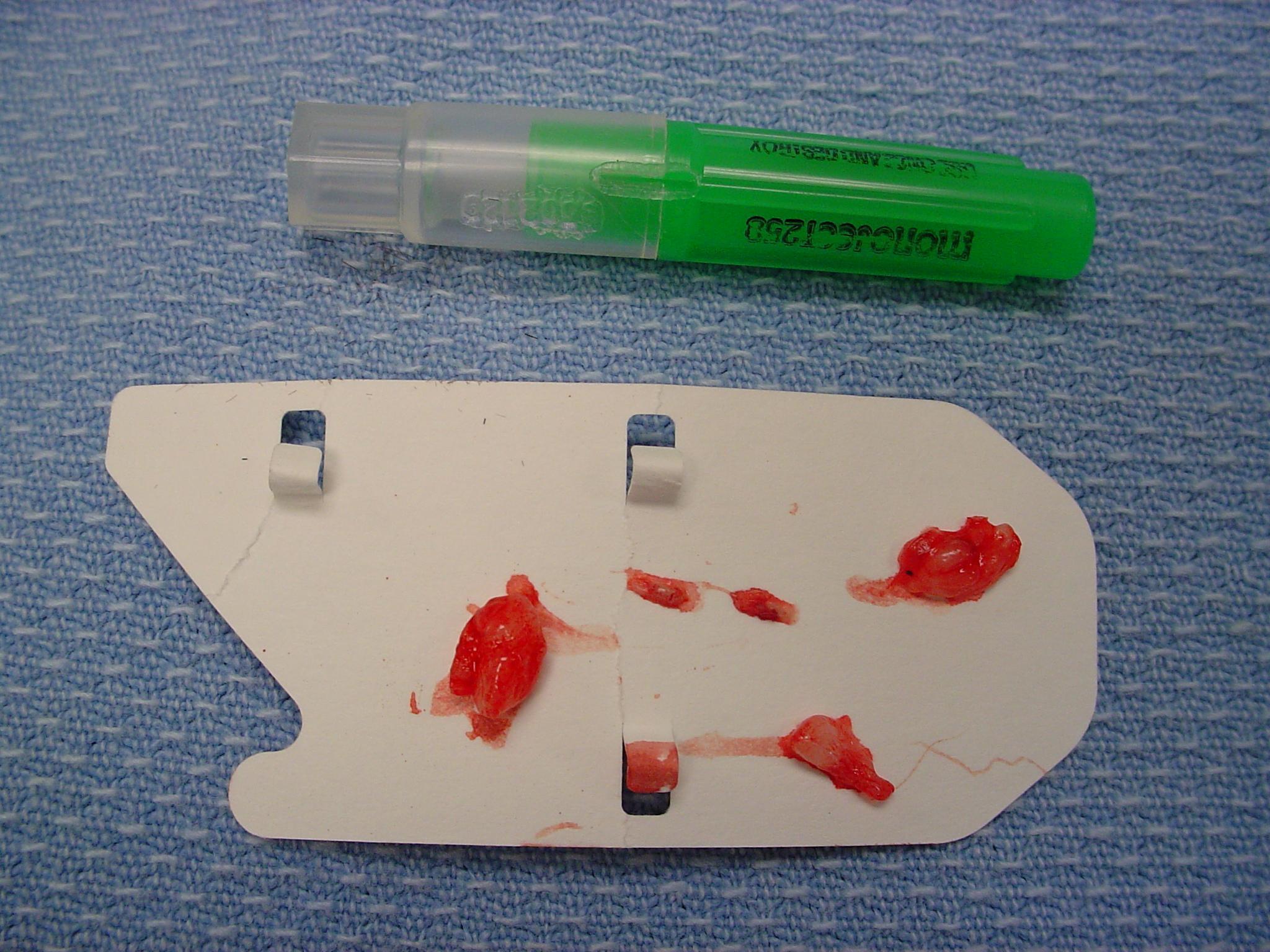A 3 year-old M/C Beagle is presented for a surgery consultation because of unusual neurological signs. The owner describes difficulty lifting the tail, and sometimes pain moving/wagging it. There may be difficulty defecating and sometimes urinating. Occasionally, the dog will chew or bite the right hind leg. He sometimes has muscle spasms, the owner is convinced, “because he is painful.” Signs have been getting worse despite treatments with prednisone and tramadol byu the referring veterinarian.
Physical and neuro exams: Physical exam within normal limits.
A 3 year-old M/C Beagle is presented for a surgery consultation because of unusual neurological signs. The owner describes difficulty lifting the tail, and sometimes pain moving/wagging it. There may be difficulty defecating and sometimes urinating. Occasionally, the dog will chew or bite the right hind leg. He sometimes has muscle spasms, the owner is convinced, “because he is painful.” Signs have been getting worse despite treatments with prednisone and tramadol byu the referring veterinarian.
Physical and neuro exams: Physical exam within normal limits.
Neuro exam: normal hind leg reflexes with no proprioception deficits. The only abnormal finding is pain on palpation of the lower spine.
First impressions: Beagles are prone to intervertebral disc disease, but Joshua does not have the typical age or the classic signs for that. The history is definitely unusual, but we take the owner seriously and decide to investigate further. We suspect a neurological problem in the lower spine.
Work up: Pre-anesthetic blood work is within normal limits. An MRI of the lumbar spine is recommended. It shows a mass dorsal to the spinal cord, intradurally and extramedullary, between L5 and L6 (pictures 1 and 2)

